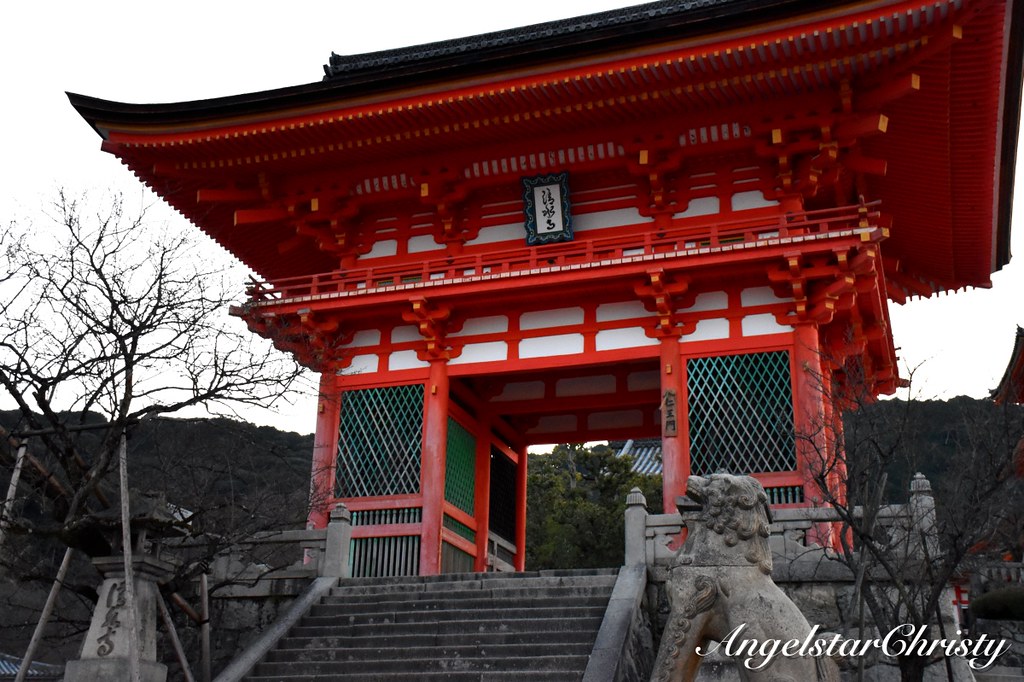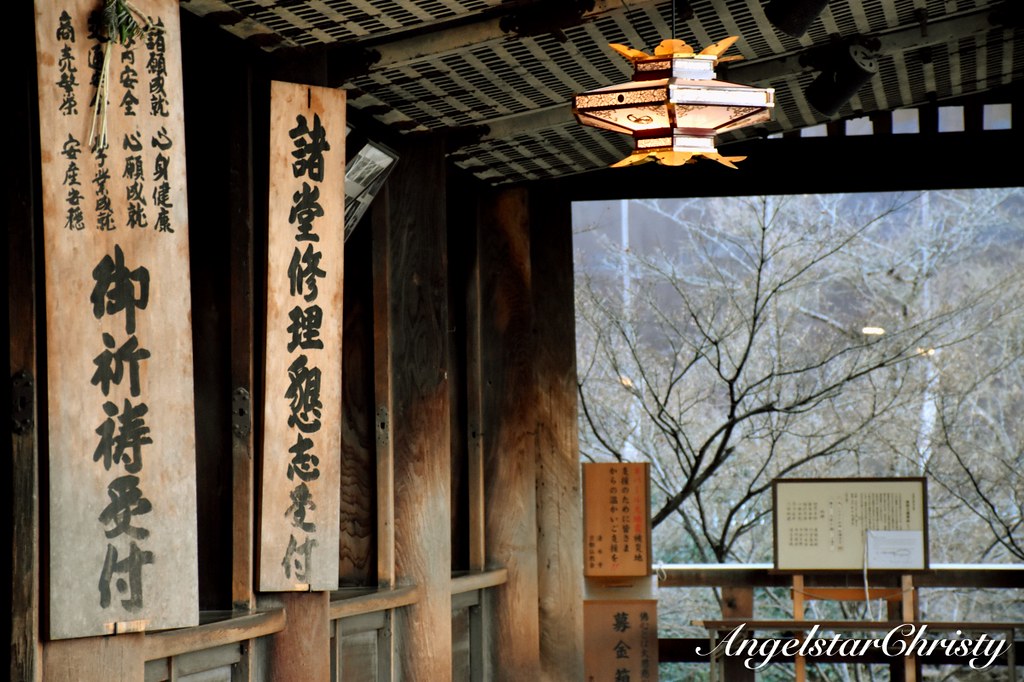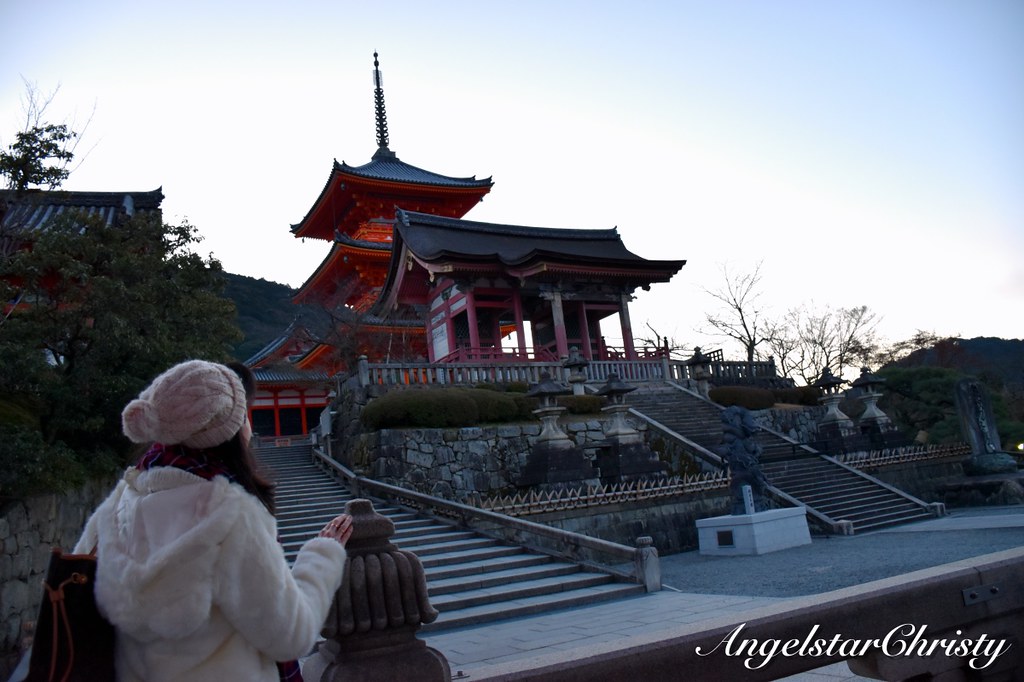
I love waking up early, and it is just the norm for me, since I am always up early on a regular basis.
Therefore, waking up early to beat the crowds or to make that trip to a place when I am traveling, you can count on me to be on time (or even ahead of time).
If the early bird catches the worm, then the early bird in me definitely catches the day; sometimes I even beat the sun in that.
I am proud.
(Don't ask me what I do waking up so early in the morning, that's my personal life)
The Land of the Rising Sun was determined to prove her worth but there I was, chasing the early break of dawn in the ancient city of Kyoto, to make my way to the iconic Kiyomizu-dera, one of the most prominent temples in the city.
Kiyomizu-dera (清水寺), also known as Otowa-san Kiyomizu-dera (音羽山清水寺).
I may be the earliest one there, besides the resident priests and monks whom I have spotted making their prayer rounds during my visit, and it is truly the best feeling to enjoy my own time and space in admiring all that the heritage landmark has to offer.
Located on a hill, Kiyomizu-dera is certainly sitting on that advantageous point when it comes to the scenic views and also the naturally tranquil environment which surrounds the religious site.
As I was making my way there, the iconic pagoda can be spotted from afar; brightly startling and in stark contrast with its natural surroundings.


The eye-catching nomon (temple gate); the main one known as the deva gate was just as vibrant in its rich and bold orange shade, standing in pride to welcome the temple's visitors.
In that soft golden hues of the breaking dawn, the nomon appears to be even more striking and inspiring in appearance.
I could not even get enough of the gate itself, and I am already bursting with excitement to see the rest of those standing on the temple grounds.

The design of the temple parallels that of most of the temples, while remaining distinguished in its own style.
The architecture is impressive as it is said that the temple was constructed entirely without a single nail in place.
Main Hall and Verandah

Dating back to its beginnings in 778, during the Heian period, Kiyomizu-dera has amassed a huge number of followers and is also one of the most important and iconic landmarks in the ancient capital.
The popularity and large number of crowds are the reasons for the need of the large halls and verandahs seen especially in the main building of the temple which is also undergoing restoration works.
Large spaces tell of the huge crowds which probably gather here during festivities and also worship gatherings.

 I love the verandah which gave an impressive view off the capital as it sits perched on the upper level of the building.
I love the verandah which gave an impressive view off the capital as it sits perched on the upper level of the building.
It was where I waited and saw the rising of the sun and the skies in its transition of the colors of the day.
Since it was winter, I enjoyed the fresh and crisp cool air and the early morning hours along with the absence of the crowd, it was even colder as I stood there wrapped in the comfort of my warm layers of protection.
The verandah which stuck out are supported by tall pillars, making out a beautiful structure which became the icon of the temple in most of the introductions to the temple.

In fact, the verandah even became known as a stage and during the Edo period, it was quoted in popular culture where people would say, "to jump off the stage at Kiyomizu" when they urge people to go ahead and "take the plunge".
Many even took it to themselves to jump off this verandah; or even attempted to, for it was believed back then (during the Edo period) that if one survives a 13m jump off the stage, they would be granted a wish.
Needless to say, this practice had been since disallowed due to the high numbers of injuries, not to mention fatalities.
I am not surprised, I mean, it is quite a height we are looking at, and if there is any wish to be granted, it would only mean a death wish.
Like the other major temples, Kiyomizu-dera is also a complex of several little shrines and the best known would definitely be the Jishu Shrine.
Jishu Shrine

The shrine is dedicated to Okuninushi; the deity of love and marriage.
It is almost a matchmaking shrine; for the deity is said to grant and arrange good matches among prospective men and women and many flocked to make their offerings and pray to meet their ideal partner.
The highlight here would be the "love stones" which are placed 18m apart and single folks could try to walk from one to the other, with their eyes closed in which the success in doing so would mean they are bound to meet their match, or find their true love.
It is just such a lovely belief, or tradition.

Otowa-no-Taki
The last highlight of the temple is the famous Otowa waterfall, where there are three shrines dedicated to three deities with a water channel running through them and falls into the pond below.


The water is directed from the waterfall behind the shrine; the waterfall from which the temple's name is derived and it is said that visitors will have their wish granted if they were to drink or even wash with the water from the channels.
Each of them are dedicated for different purposes; health, longevity and academic success.
There are differing accounts for some say you should only wish for one and focus on only one wish; for only one wish will be granted while there are also those who say you could pray for all three.
Whether the wishes are granted, only those who made the wish would truly know.
(This spot was mentioned in the news last year, with a Chinese tourist who defied warnings and even jumped into the pond and created an uproar in international and responsible tourism with much displeasure towards the misbehaviors of tourists, following an earlier incident in which tourists also breached the rules and climbed on the cherry blossom trees for photographs).
Either he really wanted to try the cool waters, or he just really wanted more than three wishes and for all his wishes to be granted.
Whichever it is, I am strongly against such acts of defiance and I do not recommend anyone doing this, as I always say, be respectful of the culture and practices, and of each of the places we visit.
No exception.
Kiyomizu takes its name from the Otowa waterfall; in which the name Kiyomizu means pure and clear water.

Therefore, with all respect, please observe all the purity of the temple and above all, it is a place of worship as well.
I am not even surprised that this is an UNESCO World Heritage Site; well, it was also the reason I was here and another interesting bit?
Kiyomizu was also one of the finalists for the New Seven Wonders of the World, though it did not make the list in the end, but to even be considered, is already an honor in itself.
It must be beautiful in the fall, or even the spring, but even in winter, I could barely contain my awe for the wonderful sight of the temple; amidst the nature and the sky as its wallpaper, colors and all.
Season or not, the colors of Kiyomizu dressed it well and it definitely looks best at the breaking dawn, don't you think?
I am glad I saw it all.










Note:
Kiyomizu-dera is a Buddhist temple on the eastern side of Kyoto.
Address:
1-294 Kiyomizu, Higashiyama-ku, Kyoto, Kyoto Prefecture
You do not have to agree with me.
Art Direction and Photography Styling by Me.
Photos/Videos all belong to me and are copyrighted.
Please kindly ask for permission if you need to use any of my images.
Check out my Pinterest @Angelstarc
Follow me on my live updates on my life, happening on SNAPCHAT @angelstarchrist



0 comments